This Smoked Pork Loin Roast is a juicy and tender meal that happens to be paleo and Whole 30 compliant. Brined in an apple juice mixture and stuffed with apples, apricot, pine nuts, and rosemary, it’s then cooked low and slow on a wood pellet grill. Eat half for dinner then save the rest for delicious leftovers!
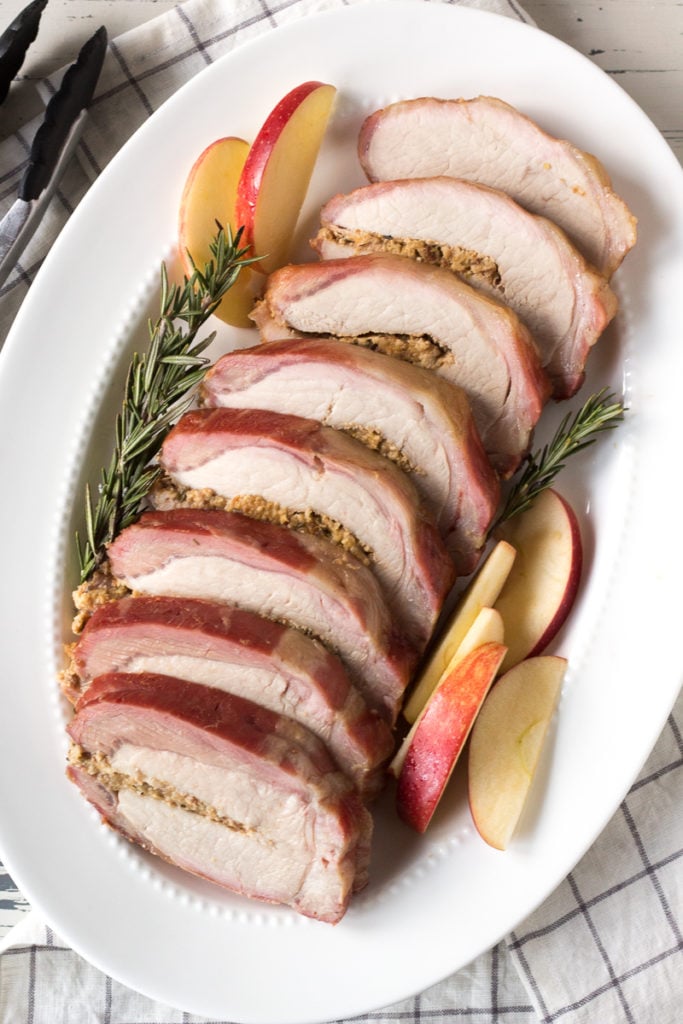
As an Amazon Associate, I earn from qualifying purchases.
If you love to grill or smoke and happen to also be on a Whole30, you’ll know how difficult it can be to find great recipes that don’t have sugar or maple syrup or honey in them.
Having done several rounds of Whole30 myself, I really wanted to make something that was delicious, with that great smoky flavor but without the sugar. Enter this smoked pork loin roast.
This pork roast is so juicy thanks to the brine, and the apple and apricot stuffing is to die for. You will seriously wonder where this was all your life. It does take a little effort, but it’s WELL worth it.
Read on to see how it’s done!
HOW TO MAKE SMOKED PORK LOIN ROAST
STEP 1: BRINE THE PORK ROAST
Select a container that will fit the pork and brine mixture but not be too big. Measure out the apple juice and water with a measuring cup and pour both into the container. Measure out the salt with a measuring cup and pour it into the juice mixture. *Note: this recipe calls for Diamond Crystal brand salt, which is less salty than other salts. If you use a different salt, you’ll need to adjust the amount – see this article on salt ratios for brine solutions to determine what you’ll need.
Stir the salt into the juice mixture with a whisk until it is completely dissolved (2 to 3 minutes). Add the bay leaf and sprig of rosemary (or you can add these in before stirring too), then put the pork in. Make sure the pork roast is covered by the brine. Cover the container (with a lid if you have one, or plastic wrap) and put it in the fridge for 8 to 10 hours.
STEP 2: FIRE UP THE GRILL & PREP THE STUFFING
Remove the container from the fridge and dump out the brine mixture. Place the pork on a cutting board and set aside.
Now is the time to get your wood pellet grill or smoker going. Make sure there are pellets or wood in it and set it to 225 degrees F.
Measure out the pine nuts with a measuring cup and place them in the bowl of a mini food processor. Chop up the rosemary and apricots with a sharp knife and a cutting board and place them in the food processor as well. Measure the salt and pour that into the food processor, then put the lid on and chop up the mixture for a couple pulses – just enough to combine things.
Next peel the apple with a vegetable peeler and chop it into chunks with a large sharp knife on a cutting board. Put it in the food processor and combine everything together until a chunky paste is formed. You may have to scoop down the sides with a spoon or spatula to make sure everything gets combined. Ultimately, you don’t want any bits bigger than the size of a small pea.
STEP 3: PREP THE PORK ROAST
Next you want to create a pocket in your pork roast. First take a look at your roast on the short end and find where the middle is (approximately). This is where you’ll aim to make your pocket, so that neither the top or bottom of the pocket is too big.
Take a large, sharp knife and make an incision about half an inch in from the end of the roast on one of the long sides. Start slicing down the roast in as straight a line as you can, stopping about half an inch away from the other end of the roast. You only need to go in about an inch or two deep for this first cut.
Once you’ve got that, you can lift the flap you’ve created and start cutting deeper into the roast to create a deeper pocket. You want to cut as far into the roast as you can without going all the way through. Simply work the knife back and forth until you’ve created a large pocket. Make sure you’re not breaking through to the other sides of the pork.
Using a spoon or small spatula, scoop the apple mixture out of the food processor and place it into the pocket you’ve created in the pork. Spread it around as best you can, making sure to get as far back as possible.
Get some kitchen twine and scissors, then cut off three pieces large enough to go around the roast and be able to tie them. Tie one in the middle of the roast with a simple knot. Tie the other two evenly spaced between the middle and each end of the roast.
STEP 4: SMOKE THE PORK ROAST
Place your roast on the grill or smoker using a pair of tongs or other utensil. If you have it, place a temperature probe into the thickest portion of the meat (usually somewhere in the middle). Set the probe to 145 degrees F. If you don’t have a temperature probe, check the pork after 1.5 hours to see where it’s at, then check again every half hour or so and pull it once it reaches 145 degrees F in the thickest part of the roast.
Once the pork is done smoking, check the temperature one final time with a meat thermometer (we love our Thermapen, which is the one pictured). Then pull it off the grill or smoker and onto a cutting board, covering it loosely with tin foil.
Let it rest for 10 to 15 minutes, then cut the kitchen twine off using a knife or scissors. Gently slice the roast into roughly half inch portions with a large sharp knife (and meat fork if you have it). Some of the stuffing in the middle may come out as you slice, but you can either put it back into the roast or spread it on each slice . Serve immediately.
You may have a couple of questions about this recipe, or smoking pork loin in general. Let’s get to those now.
WHAT’S THE DIFFERENCE BETWEEN A PORK LOIN AND PORK TENDERLOIN?
Pork loin and pork tenderloin are different cuts of meat. Pork loin is a large, thick cut from the back of a pig and is sometimes also called center cut pork loin. Tenderloin is a skinnier cut that runs along the backbone of the animal. If you want more information, check out this article on the differences between the two.
CAN I USE PORK TENDERLOIN IN THIS RECIPE?
No, you cannot. It is an entirely different cut of meat and much smaller than a pork roast.
DO I NEED TO TRIM THE FAT OFF THE PORK BEFORE BRINING?
You can, but you don’t have to. If you keep the fat on, be sure and cook it fat side up on the grill.
HOW DO YOU KEEP PORK MOIST WHEN SMOKING?
This is why the recipe calls to brine the pork. Pork loin tends to be very lean cuts of meat. Brining it helps it remain juicy when cooked.
WHAT TEMPERATURE SHOULD A PORK LOIN BE COOKED TO?
Cook a pork loin to an internal temperature of 145 degrees F.
COOKING TIPS
-
Setting the pork aside while you make the apple mixture will help it warm up a bit, which you want after it’s been cold in the refrigerator. Meat can cook unevenly if it’s too cold when placed on a grill or smoker – on a grill the outside cooks and the inside stays cold; in a smoker, the the inside can take too long to cook and the outside overcooks.
-
Don’t cut the pork with a serrated knife – it will tear up the meat. Use a large pointed knife that’s been recently sharpened for the easiest cut.
-
To easily measure out the kitchen twine, I take the twine and measure it against the short end of the roast. I do that three times and then cut it, and usually that’s long enough to tie around the roast with a little extra to spare.
RECIPE VARIATIONS
-
For additional flavor, spread a mixture on the outside of the roast. You could do either some avocado oil mixed with rosemary and salt. Or try a clove or two of garlic mixed into some apricot spread (made of just fruit to be Whole30 compliant).
- Any apple will do for the stuffing! I love a crisp but slightly sweet apple, like a Gala, but you could also use a tart one like a Granny Smith or a sweet one like a Honeycrisp.
PIN THIS SMOKED PORK LOIN ROAST FOR LATER!
IF YOU’RE LOOKING FOR MORE GRILLING IDEAS, CHECK THESE OUT!
- Grilled Teriyaki Chicken (Whole30, Paleo, GF)
- Greek Lamb Skewers (Whole30, Paleo, GF)
- Asian Steak Marinade (GF)
- Teriyaki Chicken Kabobs (Whole30, Paleo, GF)
- Dry Rubbed Steak (GF)
OR IF YOU NEED SOME EASY WHOLE30 DINNER IDEAS, TAKE A LOOK AT THESE!
- Mexican Ground Beef Skillet
- Paleo Ground Beef Stroganoff
- Instant Pot Greek Chicken
- Paleo Ground Beef & Broccoli
- Paleo Meatloaf Muffins
If you make this Smoked Pork Loin Roast (or any other recipe) then don’t forget to rate the recipe and let me know how it went in the comments below!
YOU CAN ALSO FOLLOW ME ON FACEBOOK, INSTAGRAM AND PINTEREST TO SEE MORE GOOD TO EAT, GLUTEN FREE AND WHOLE30 FOOD.
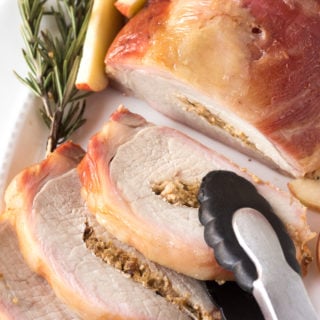
Smoked Pork Loin Roast (Whole30, Paleo)
Equipment
- A large container (to fit the pork and brine)
- A mini food processor
- A spoon or spatula
- Kitchen twine
- Scissors
- A temperature probe or meat thermometer
- A carving fork
Ingredients
- 2 pound pork loin roast
For the brine:
- 5 cups apple juice Whole30 compliant
- 3 cups water
- 1 cup Diamond Crystal kosher salt
- 1 dried bay leaf
- 1 sprig fresh rosemary
For the stuffing
- ¼ cup pine nuts
- 6 dried apricots
- 1.5 teaspoons chopped fresh rosemary
- ½ tsp kosher salt
- ¼ apple
Instructions
- Select a container that will fit the pork and brine mixture but not be too big. Measure out the apple juice and water with a measuring cup and pour both into the container. Measure out the salt with a measuring cup and pour it into the juice mixture. *Note: this recipe calls for Diamond Crystal brand salt, which is less salty than other salts. If you use a different salt, you'll need to adjust the amount - see this article on salt ratios for brine solutions to determine what you'll need. Stir the salt into the juice mixture with a whisk until it is completely dissolved (2 to 3 minutes). Add the bay leaf and sprig of rosemary, then put the pork in, making sure it is covered by the brine. Cover the container (with a lid if you have one, or plastic wrap) and put it in the fridge for 8 to 10 hours.
- Remove the container from the fridge and dump out the brine mixture. Place the pork on a cutting board and set aside.
- Now is the time to get your wood pellet grill or smoker going. Make sure there are pellets or wood in it and set it to 225 degrees F.
- Measure out the pine nuts with a measuring cup and place them in the bowl of a mini food processor. Chop up the rosemary and apricots (doesn’t have to be together) with a sharp knife and a cutting board and place them in the food processor as well. Measure the salt and pour that into the food processor, then put the lid on and chop up the mixture for a couple pulses - just enough to combine things. Next peel the apple with a vegetable peeler and chop it into chunks with a large sharp knife on a cutting board. Put it in the food processor and combine every together until a chunky paste is formed. You may have to scoop down the sides with a spoon or spatula to make sure everything gets combined. Ultimately, you don’t want any bits bigger than the size of a small pea.
- Next you want to create a pocket in your pork roast. First take a look at your roast on the short end and find where the middle is (approximately). This is where you’ll aim to make your pocket, so that neither the top or bottom of the pocket is too big. Take a large, sharp knife and make an incision about half an inch in from the end of the roast on one of the long sides. Start slicing down the roast in as straight a line as you can, stopping about half an inch away from the other end of the roast. You only need to go in about an inch or two deep for this first cut. Once you’ve got that, you can lift the flap you’ve created and start cutting deeper into the roast to create a deeper pocket. You want to cut as far into the roast as you can without going all the way through. Simply work the knife back and forth until you’ve created a large pocket. Make sure you're not breaking through to the other sides of the pork.
- Using a spoon or small spatula, scoop the apple mixture out of the food processor and place it into the pocket you’ve created in the pork. Spread it around as best you can, making sure to get as far back as possible. Get some kitchen twine and with scissors, cut off three pieces large enough to go around the roast and be able to tie them. Tie one in the middle of the roast with a simple knot. Tie the other two evenly spaced between the middle and each end of the roast.
- Place your roast on the grill or smoker using a pair of tongs or other utensil. If you have it, place a temperature probe into the thickest portion of the meat (usually somewhere in the middle). Set the probe to 145 degrees F. If you don’t have a temperature probe, check the pork after 1.5 hours with a meat thermometer to see where it’s at, then check again every half hour or so and pull it once it reaches 145 degrees F in the thickest part of the roast.
- Once the pork is done smoking, check the temperature one final time with a meat thermometer (we love our Thermapen, which is the one pictured). Then pull it off the grill or smoker and onto a cutting board, covering it loosely with tin foil. Let it rest for 10 to 15 minutes, then cut the kitchen twine off using a knife or scissors. Gently slice the roast into roughly half inch portions with a large sharp knife (and meat fork if you have it). Some of the stuffing in the middle may come out as you slice, but you can either put it back into the roast or spread it on each slice . Serve immediately.
Notes
* Don’t cut the pork with a serrated knife - it will tear up the meat. Use a large pointed knife that’s been recently sharpened for the easiest cut.
* To easily measure out the kitchen twine, I take the twine and measure it against the short end of the roast. I do that three times and then cut it, and usually that’s long enough to tie around the roast with a little extra to spare.





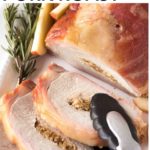

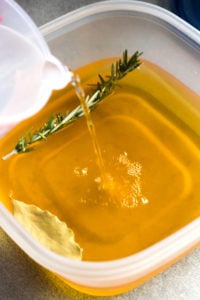
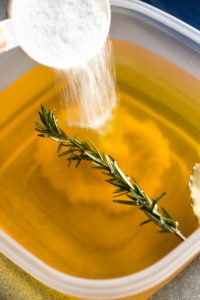
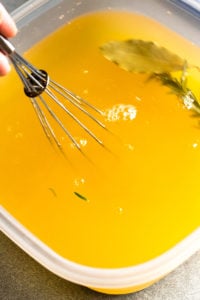
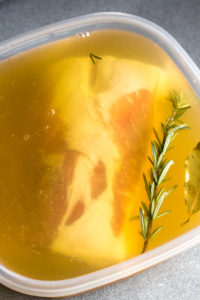

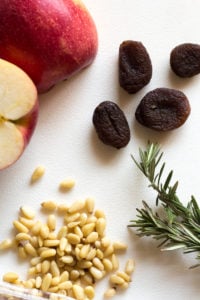
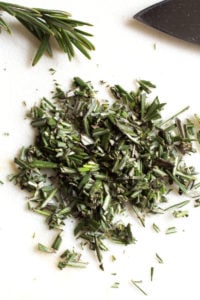
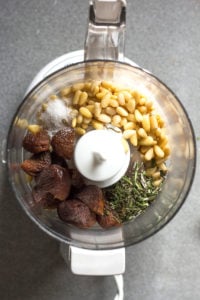
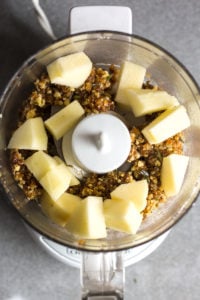
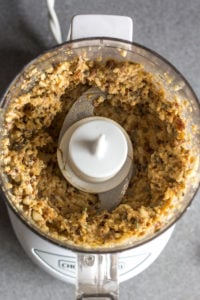
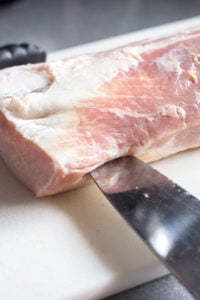
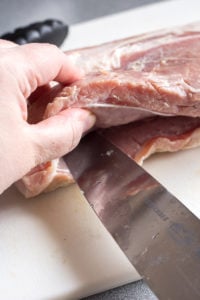
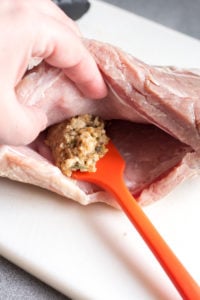
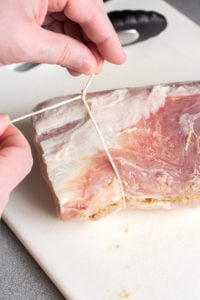
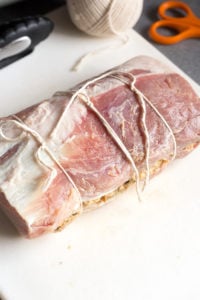
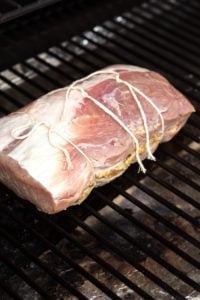
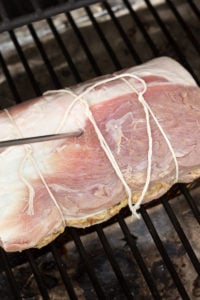
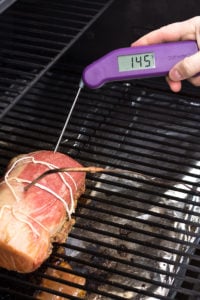
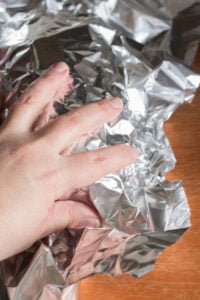
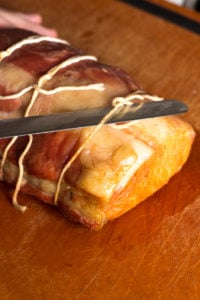
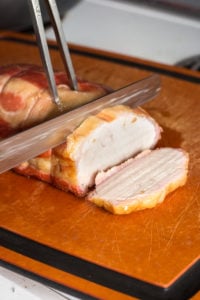
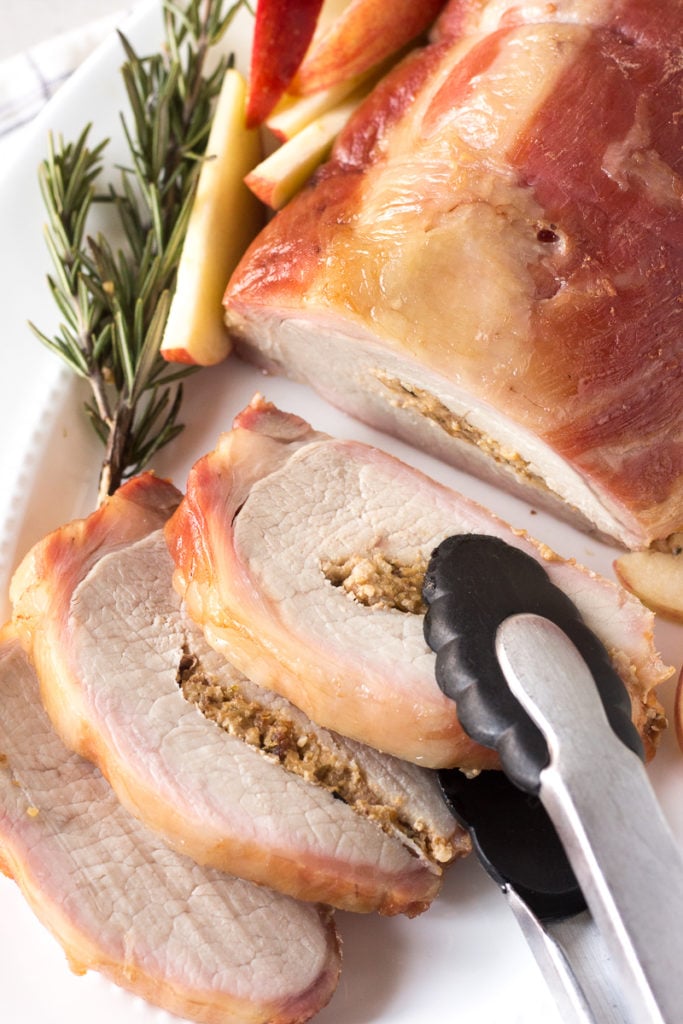
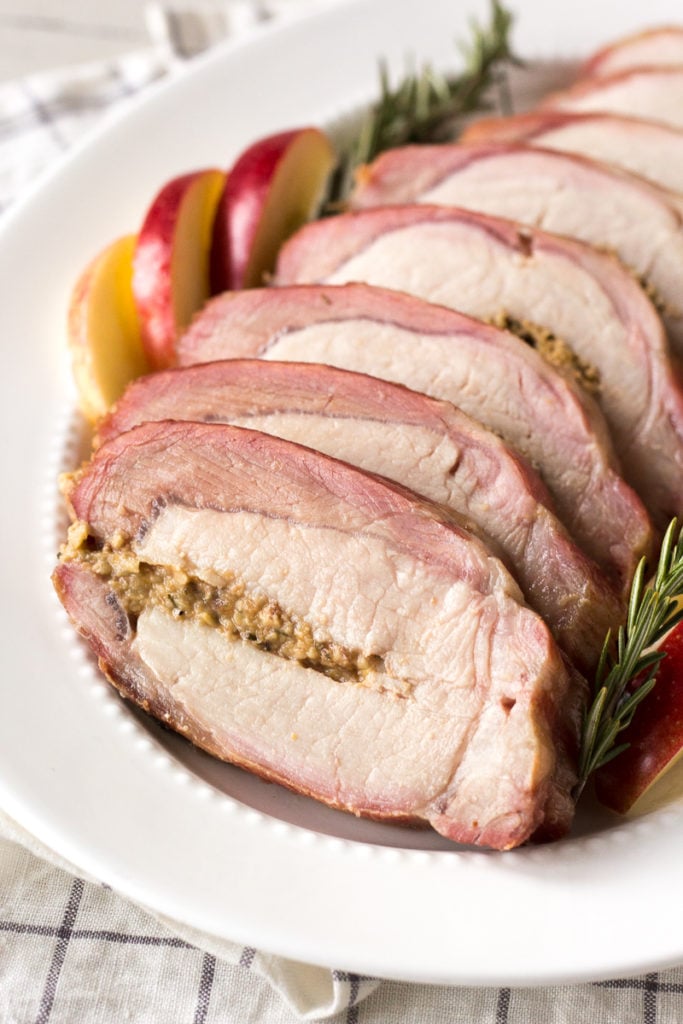
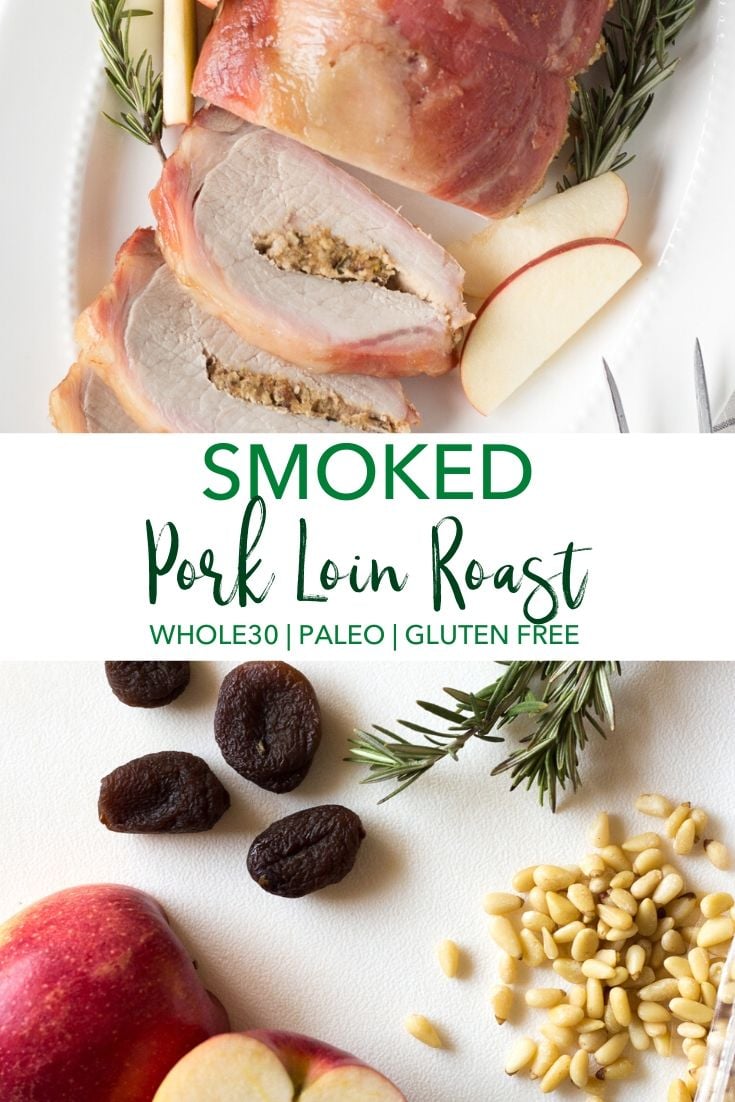
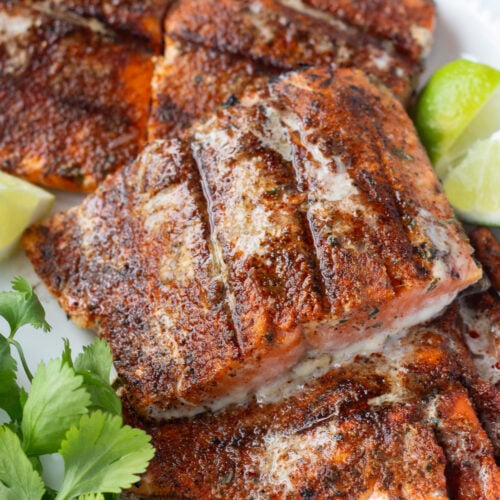
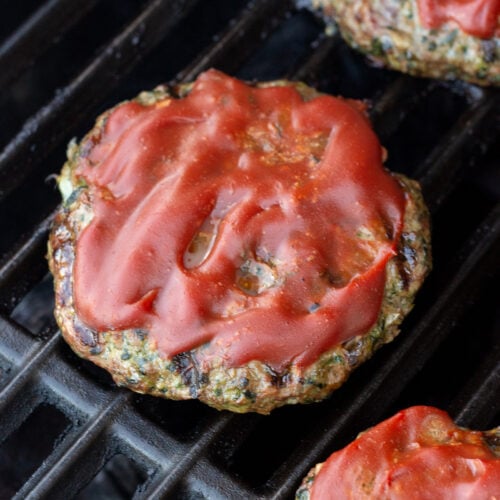
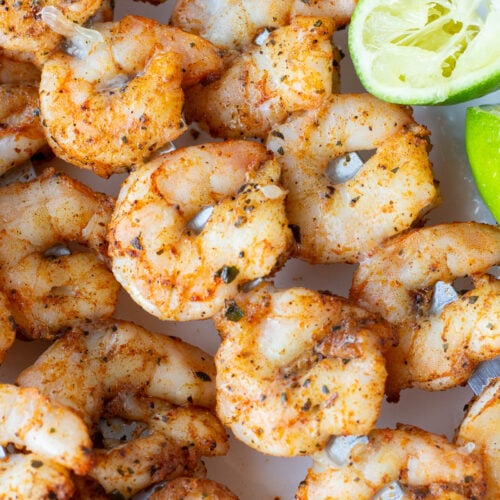
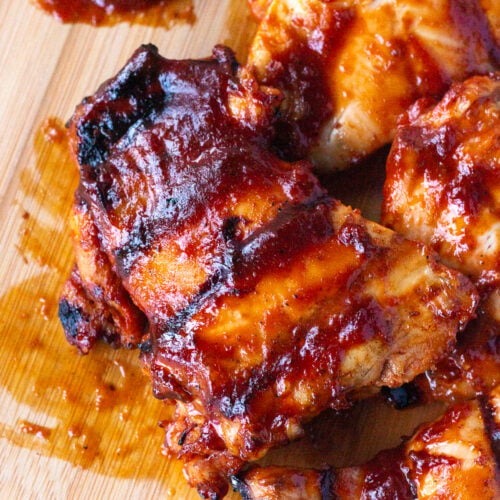
Lucille
All these recipes look great but i only copy 4 1/2- 5 star recipes and when i don`t see a rating, i worry its no good , please put up rated ones only , Thankyou .